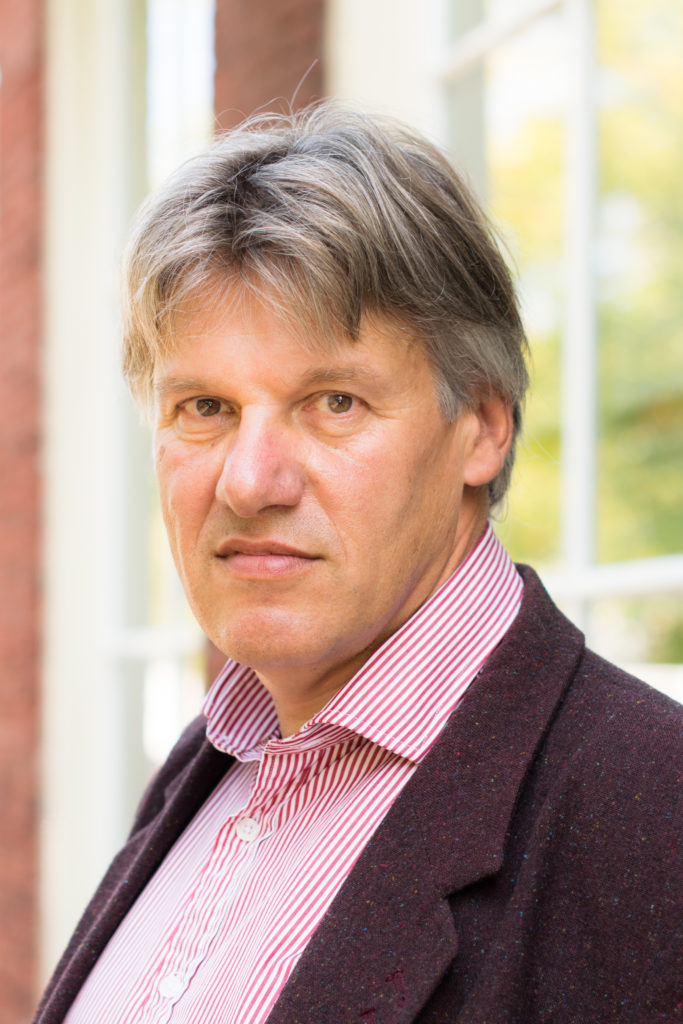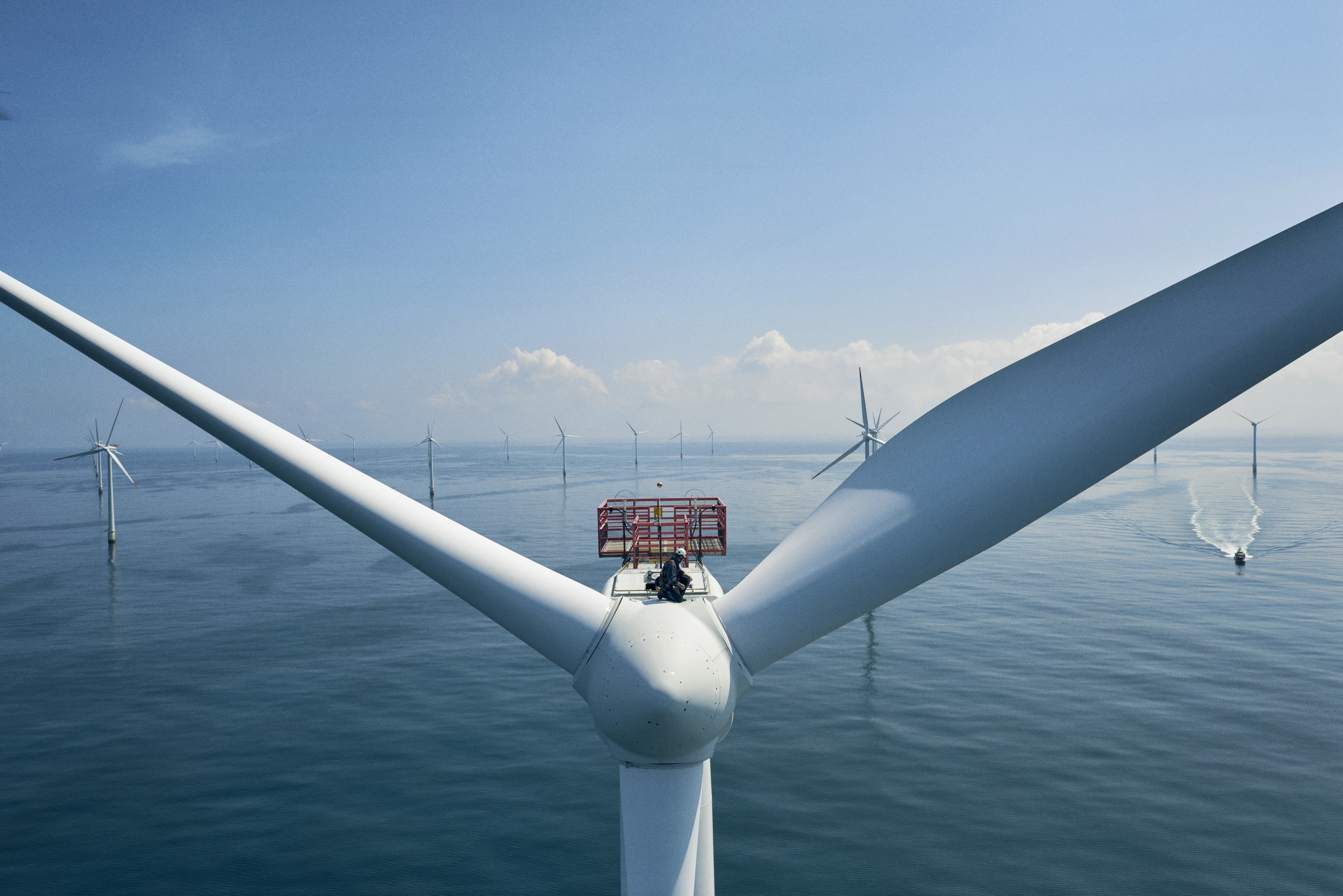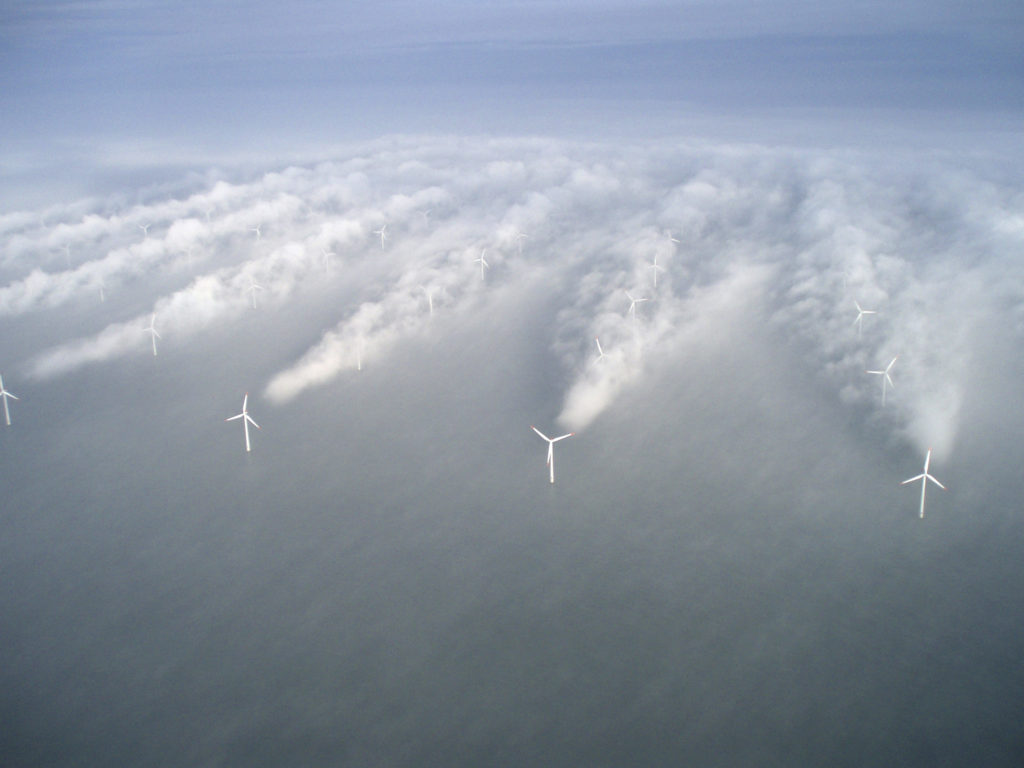Offshore wind farms are on the rise. In the next ten years, another 10 gigawatts of capacity will be built in the North Sea, relatively close to the coast. But what happens after 2030? Will we continue to build? Will we be able to use the renewable energy, or will we turn it into hydrogen? We speak to Frans Rooijers and Martha Deen from the research and consultancy firm CE Delft.
By: Roy op het Veld.
‘The entire North Sea will be filled with wind turbines’, predicts Rooijers, director of CE Delft. ‘And to do that efficiently, both technically and economically, you have to connect the demand for electricity directly to this renewable resource’, adds his colleague Martha Deen, a researcher and consultant specialising in energy transition.
While matching supply and demand is a delicate task – after all, wind speeds naturally fluctuate – the expansion of wind farms at sea does not present any significant obstacles for the time being. Rooijers and Deen calculate that the demand for electricity in the Netherlands is presently at a peak capacity of about 20 gigawatts, while the current capacity of all wind turbines on land and sea is about 10 gigawatts. By 2030 this will have more than doubled, mainly due to the construction of wind farms at sea.

Martha Deen, researcher and consultant energy transition at CE Delft 
Frans Rooijers, general manager of CE Delft
More electricity, less natural gas
It is unclear exactly how this capacity expansion will be achieved, that depends on technological developments and costs. But the growth of offshore wind energy will continue. ‘The demand for electricity will also rise sharply as households and businesses do increasingly more electrically, for example, with the electric car and the heat pump, and increasingly less by means of natural gas’, says Deen. Rooijers predicts that peak demand will double in the next ten years to around 40 gigawatts. ‘But even after 2030, wind farms will continue to be built in the North Sea and increasingly further offshore’, he expects. ‘In time, the Netherlands will produce structural surpluses of renewable electricity’.
What can we do with the surplus?
What can we do with the surplus? Rooijers believes that it can be transported it to neighbouring countries that have few or no offshore wind farms. However, that would require a huge investment in increasingly long power cables on the seabed because the wind farms will have to be placed further and further away from the coast. ‘Or will we use the electricity from wind farms further away to make hydrogen?’ wonders Deen, adding that the hydrogen could then perhaps be brought ashore using the existing gas network in the North Sea.

Hydrogen is the inevitable word. There are few discussions about the energy transition in which hydrogen is not mentioned. During the past two years, it has often appeared to be the solution to all problems. But Rooijers and Deen see hydrogen as the final element rather than the starting point in the energy transition. Hydrogen is not a raw material that is extracted from nature, like oil and gas. It is an energy carrier produced by electrolysis, which requires (renewable) electricity and water. ‘Using generated electricity is always the best option. An electrolyser wouldn’t have to be built and moreover, there wouldn’t be a conversion loss’, says Deen. When electricity is converted to hydrogen, more than 30% of the energy is lost and another 30% is lost in the conversion to usable energy, depending on the intended purpose.
Hydrogen the last option
‘Hydrogen is actually always the last option’, continues Deen. ‘You only use it if it becomes an obligation or if there is no other alternative’. Long distance travel by aircraft will become extremely difficult when using batteries due to their added weight. It can also be a solution to generating electricity when there is no wind or when there is insufficient sunlight. And in industry (chemical and steel companies), production processes can sometimes require high temperatures that cannot be achieved with electricity. In such cases, hydrogen is a solution.

But heating your boiler with hydrogen? Deen can’t imagine it. ‘Why would you do that when you can heat your house with an electric heat pump that is three times more efficient? And if that’s not possible, a heating network or gas from renewable sources is still more affordable than hydrogen’. Electricity is more efficient. When it comes to cars, an electric motor has a 95% efficiency, while a petrol engine only reaches 30%. ‘If you switch to electricity, you can save a lot of energy throughout the entire chain’, says Rooijers.
Power plants on hydrogen
One problem could arise if all the electric cars are simultaneously connected to charging points and subsequently all the heat pumps in the Netherlands are switched on at the same time: a shortage of solar and wind electricity in that moment. ’You could use flexible power plants that run on hydrogen’, outlines Rooijers.
This is the key advantage of hydrogen over electricity. ‘A gas like hydrogen is easier to store and can therefore serve as a buffer between supply and demand’, explains Rooijers. The benefit is that hydrogen can be stored in underground caverns, as is currently the case with natural gas.
In reference to Europe’s current dependence on Russian natural gas, Rooijers also believes that the production of our own hydrogen could assist in gaining strategic autonomy. In contrast to oil and gas, hydrogen can be produced anywhere where there is a lot of wind or solar energy available. As a result, we will be less dependent on a relatively small number of specific countries in the future.
This independence is also important for the European Commission, and partly for this reason, Brussels is investing heavily in hydrogen. Europe requires member states to produce no less than 50% of their industrial hydrogen sustainably by 2030. This requires a complete overhaul since the production of hydrogen in industry is currently still based on natural gas. In a study conducted with TNO, CE Delft concluded that for the Netherlands ‘all additional wind energy generated until 2030 should be used for the production of green hydrogen’.
Rooijers and Deen question whether that is a smart strategy. ‘The production costs for green hydrogen in the Netherlands will be €3 to €4 per kilo, while Australia and countries in Africa, South America and the Middle East can probably do it for €1.50 due to abundant solar energy. In addition to that, there are the transport costs’. CE Delft’s consultants expect that a significant proportion of the green hydrogen produced in the Netherlands will ultimately be imported. ‘Especially if demand from industry starts to rise rapidly’, they say.
Importing hydrogen
The negative effect of such a trend is that if all new offshore wind power is needed for hydrogen, it will become increasingly difficult to sustain rapid growth in renewable electricity. ‘It removes a lot of green power from the market’, says Rooijers. However, the demand from Brussels could be instrumental in getting the hydrogen sector off the ground and creating a market.
Image: Vattenfall
This article previously appeared in Pondera’s anniversary magazine. Would you like to receive the magazine (in Dutch) digitally or by regular mail? Requests can be made via this link.









